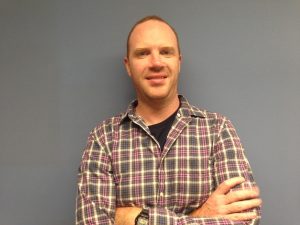
A/Professor Neely
Neuropathic pain is notoriously hard to treat, but now Australian researchers are developing a stem cell therapy that they say shows great promise. After demonstrating efficacy of the therapy in animal models, researchers from the University of Sydney led by Associate Professor Greg Neely, head of the Dr John and Anne Chong Lab for Functional Genomics at the Charles Perkins Centre, are now advancing their work into humans with support from a NSW Government grant. Professor Neely shared the latest on this work with the limbic.
Can you describe the aim of your research in 10 words?
Our goal is to develop a stem cell therapy to cure neuropathic pain.
What is the treatment you are investigating?
We will be taking skin cells from patients with severe untreatable neuropathic pain, turning these cells into pain-killing neurons, and then we place these pain-killing cells back into the patient to try and stop their pain. We can do this successfully in animal systems, and now we are performing extensive safety tests in mice and large animal models so we can then try this in human patients with pain.
What is known about stem cell-derived therapy for neuropathic pain so far?
There have been a few studies in the last five years showing that if you isolate pain killing neurons from fetal mice, you can transplant these cells into mice with neuropathic pain and basically cure their pain. So there is good evidence that this works, but the problem is we can’t use mouse fetal transplants to treat human pain patients, so we needed a new approach. That is why we developed an induced pluripotent stem cell (iPSC)-based therapy, so we can grow pain killer neurons from a patient’s own cells.
What inspired this research?
We were doing basic research investigating how insects deal with nerve damage. Through a systematic step-by-step investigation of insect sensory processing, we saw a staggering loss of pain inhibitory neurons after nerve damage, and by protecting these cells, or reinforcing the pain killing signals, we could basically block disease. So then we moved this from fly to human/mouse [models], and saw a similar critical role for loss of inhibition in neuropathic pain.
What aspect of this research excites you the most?
I think the coolest aspect of this research is that we have the clear possibility to permanently and irreversibly cure some forms of chronic pain. So I think that’s really exciting and we want to move as fast as possible to learn everything we can about this technology.
How far is your work from impacting patient care – and what effect could it have?
Assuming everything goes ok with our safety studies, and that we can encourage our clinical colleagues and obtain approval from the hospital human ethics committee, we can try this technology in pain patients within about three years. Since this kind of therapy has never been tried in patients before, we really do have to move cautiously and do extensive characterisation of safety, but all our evidence so far suggests this technology should be safe.
There is a lot of concern at the moment around unproven stem cell interventions being sold direct to consumers, what impact does this have on researchers like yourself?
Yes, the rules in Australia have allowed for minimal regulation of stem cell interventions that use the patient’s own cells. These rules are changing and will make unproven stem cell interventions more difficult to sell to consumers in the future. For our technology, this potential therapy is all very much evidence-based, and can basically cure neuropathic pain in mice, but we will have to see if this works in human patients. We will let the results speak for themselves.
What are the next steps in this line of research?
We are doing extensive safety profiling, then also we are further optimising this technology to make the pain killing activity of these transplants more potent, and we are applying this technology to other causes of medical pain, for example cancer pain or diabetic pain.
What is your research Holy Grail – the one thing you’d like to achieve?
Well from the research side, this technology is the Holy Grail for pain studies, but in the future we would like to use this technology to help provide some long-lasting relief for patients in extreme pain.
What is your biggest research hurdle?
The hardest part of this research is to attract significant funds to move our research as quickly as possible. Also these studies take quite a long time, like 3-6 months per experiment, so we need patience and a well thought-out plan to ensure efficient progress.
Who has inspired you in work or life?
My mother Joan Neely inspired me to do whatever interests me, and always made me feel like I had value even when I wasn’t that good at school or life, so that support and inspiration was essential for me to get where I am now. For science, my old postdoc mentor Josef Penninger inspired me to try and tackle big problems in medicine using simple systematic evidence-based approaches.
Associate Professor Greg Neely, from the University of Sydney’s Charles Perkins Centre and School of Life and Environmental Sciences, completed his PhD in human immunology at Canada’s University of Calgary, and went on to train in functional genomics in Vienna, Austria. He runs the Greg Neely lab at the Charles Perkins Centre using functional genomics approaches to find novel human disease genes and pathways.